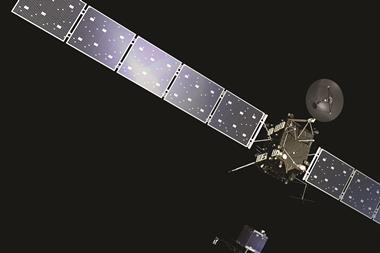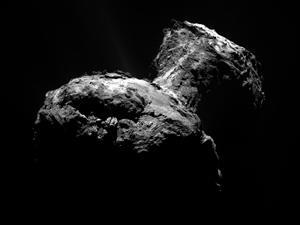Organohalogen found simultaneously in the tail of a comet and the cloud surrounding a protostar
Traces of chloromethane have been detected in the atmosphere of comet 67P/Churyumov-Gerasimenko by the Rosetta spacecraft’s Rosina instrument, as well as within the clouds of dust and ash around a young protostar. This is the first time an organohalogen has been spotted in space. On Earth, such compounds are produced by industrial processes or by living organisms. This has led to it being suggested by astrobiologists as a potential biomarker in the search for life on other planets.
The new findings, however, show that chloromethane is not only produced by life. They also indicate that chloromethane and similar compounds could have been brought to our planet by past cometary impacts. The researchers who processed the measurements say up to 50 gigatonnes of chlorine could have been delivered to early Earth in this way.
Other signals from the protostar, which were collected using the Atacama Large Millimeter/Submillimeter Array in Chile, suggested traces of the organohalogen fluoromethane were also present.
References
E C Fayolle et al, Nat. Astron., 2017, DOI: 10.1038/s41550-017-0237-7

















No comments yet